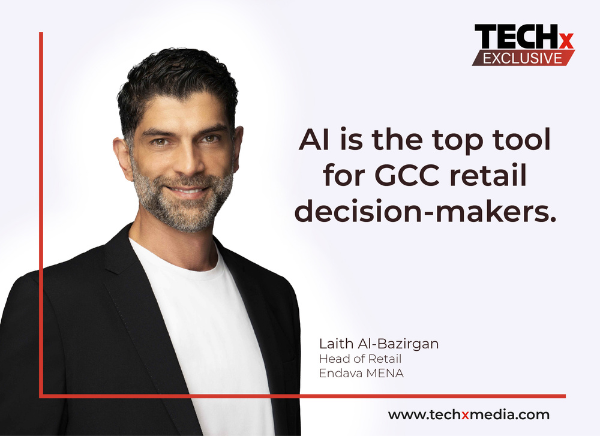
By Laith Al-Bazirgan, Head of Retail at Endava MENA
Following years of concerted efforts by GCC governments, and after a pandemic response characterized by pivoting and innovation, the outlook for the GCC retail sector is positive. By one estimate, by 2026, non-food retail sales in the region will have increased by around US$39 billion on 2021 levels. Whilst it should be noted that this success is driven partially by government support and other favorable externalities such as demographics and tourism revivals, retailers continue to play their part by continually reinventing the customer experience. They ensure there is no gap in excellence between brick-and-mortar visits and online sessions.
Currently, the most powerful tool at the disposal of GCC retail decision-makers is, of course, artificial intelligence (AI). The best analytics programs stem from having a wealth of data, and retailers have no shortage of PII and transaction material. In theory, this allows them to anticipate customer events and respond to needs in advance. But predictive analytics is not guaranteed by data volume alone.
A McKinsey study that focused on five sectors across all six GCC nations found 75% of regional retailers were using AI in at least one business function. This put the sector ahead of others in McKinsey’s research. It is therefore reasonable to predict a 2024 in which regional retailers will be asking how they can build on recent AI successes. Minimizing customer churn is a top priority and one that AI is ably equipped to address. Investing in predictive analytics can yield the necessary insights but it is important to do so with one eye on the vision for the brand.
There are plenty of studies showing us how much more (five, six, seven times, or more, depending on what you read) customer acquisition costs are compared with those of retention. Predictive analytics is the ultimate advanced-warning bell for churn. Using the right statistics and machine-learning capabilities, organizations can zero in on churn risks, and adjust the shopping experience to keep them engaged. Effective predictive analytics will examine the business from every angle. It will choose the metrics most significant to the individual retailer as part of a churn-beating recipe cooked with four ingredients.
1. The right data
The chief criteria in selecting data to feed a predictive analytics strategy are transparency and quality. The data being used must be recent in the context of the use case (recent enough to be relevant). It must also be correctly formatted. Datasets always have some missing and incomplete fields. Some data may be out of date or inaccurate in some other way. This can lead to inconsistencies that can impact the usefulness of the model and cast doubt on its recommendations. This doubt can constitute considerable risk if recommendations are made directly to customers in a production setting without any oversight from the enterprise side.
2. The right model
Predictive analytics is not a uniform practice with a single approach and a single set of goals. Each model is unique to the practitioner, so each retailer must build the model that fits its unique requirements, external factors, on-hand data, and capabilities. For example, logistic regression is a binary model that can forecast churn probabilities on a customer-by-customer basis. This is useful for customer success managers and marketing teams when they try to personalize engagements and campaigns. But logistic regression’s simplicity can lead to inaccurate results, so depending on circumstances, a business may want to combine it with another model. One candidate is the decision tree, which segments customer data by a range of attributes including past behavior and preferences. In so doing, the decision tree groups customers into probabilistic groups according to their likelihood to churn. Sometimes decision trees themselves are combined with others to form a so-called “random forest” to provide more accurate churn predictions, but these combinations take more time and testing to become viable.
Larger businesses with larger datasets may go looking for complex, non-linear relationships. For this, they must turn to neural networks, which use sophisticated algorithms to build node-like analysis structures that are capable of going beyond simple probabilities of churn to analyze why it occurred. Survival analysis goes even further, predicting from a customer’s introduction how long it will take for them to churn, if at all.
3. The right talent
All of the models described are useful for determining different insights. But who decides which to use and in what combination? And who interprets the results? Predictive data is still just data until skilled professionals present it as information. Even cleverly abstracted data, displayed on visually rich dashboards, needs someone to interpret it and translate it for consumption by line-of-business executives.
In the GCC, AI skills gaps mean building a team that is trained to understand predictive data is impractical through straight recruitment. Upskilling in-house domain experts is preferable, but failing that, third-party specialists can supplement the business’s data team.
4. The right guarantees
Businesses leaders that operate in a B2C industry will know how seriously modern customers take data security and privacy. Being able to demonstrate diligence in these areas is an important prerequisite of consumer trust and, hence, of customer retention.
In late 2023, the Saudi Data and Artificial Intelligence Authority (SDAIA) announced the Kingdom’s Personal Data Protection Law. Entering enforcement in September this year, the law will join similar consumer protections in the UAE, Kuwait, and other Gulf countries. Staying on top of such rules is a critical part of a value-adding predictive analytics strategy. Businesses must be in a position to reassure their customers (and the regulators that protect those consumers) that every shred of data used has been collected and stored appropriately.
Manageable churn
Churn is not something to be eliminated. It will always be there. But it is something to be managed. Retailers can do so through carefully implemented predictive analytics that allows them to turn potential churn into opportunities for repeat business.